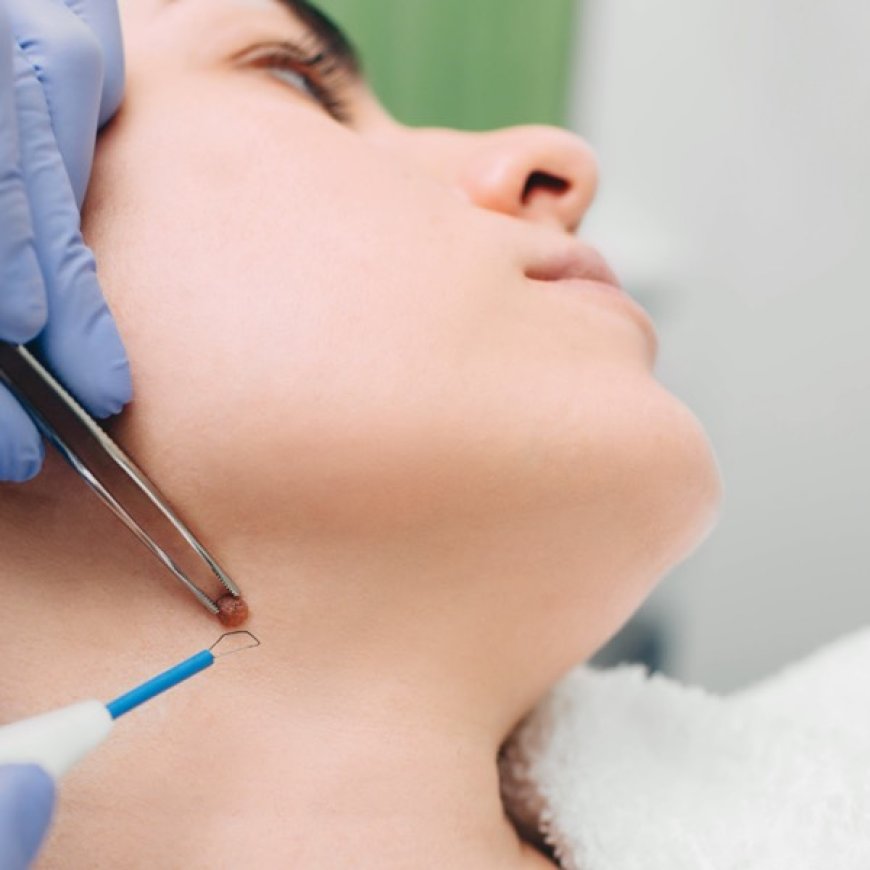Is Mole Removal Painful? What to Expect
Is mole removal painful? Discover pain levels, recovery tips, and what to expect during and after mole removal for a comfortable and stress-free experience.

Mole removal in Islamabad is a popular procedure for both cosmetic and medical reasons. Whether it’s about enhancing your appearance or addressing potential health risks, many people wonder about the pain involved in the process. This blog explores the types of mole removal methods, the associated discomfort, and what to expect during and after the procedure.
Factors Affecting Pain Levels:
Several factors influence how much pain you may feel during mole removal:
- Type of Mole Removal Method: Different techniques vary in terms of invasiveness and pain levels.
- Size and Location of the Mole: Sensitive areas like the face or hands may cause slightly more discomfort.
- Individual Pain Tolerance: Everyone’s pain threshold is different, so experiences can vary.
The good news is that most procedures use local anesthesia, significantly reducing or eliminating pain during the process.
Common Mole Removal Techniques:
1. Excision Surgery:
- Process: The mole is surgically removed with a scalpel, and stitches are used to close the wound.
- Pain Level: Local anesthesia ensures a painless procedure. Some soreness may be experienced during recovery.
2. Shave Removal:
- Process: The mole is shaved off at the surface of the skin using a blade.
- Pain Level: Minimal to no pain during the procedure. The treated area may feel slightly tender afterward.
3. Laser Mole Removal:
- Process: A laser beam targets the mole’s pigment to break it down and remove it.
- Pain Level: Feels like a mild tingling or snapping sensation. No anesthesia is typically required.
4. Cryotherapy:
- Process: Liquid nitrogen is applied to freeze and destroy the mole.
- Pain Level: A stinging or burning sensation during the freezing process, which subsides quickly.
What to Expect During the Procedure:
Most mole removal procedures are straightforward and quick, lasting anywhere from 15 to 30 minutes. Local anesthesia is applied to numb the area, ensuring a pain-free experience. In non-invasive methods like laser treatment, anesthesia may not be necessary at all.
While some pressure or minor discomfort may be felt, significant pain is highly unlikely.
Recovery and Pain Management:
After the procedure, mild discomfort, redness, or tenderness in the treated area is normal. Here’s what you can expect:
- Excision and Shave Removal: Some soreness or tightness may occur for a few days. Pain relievers like ibuprofen can help.
- Laser and Cryotherapy: Mild irritation or redness may appear but typically resolves within a few days.
To ensure a smooth recovery:
- Follow Aftercare Instructions: Keep the area clean and avoid exposure to dirt or water until it heals.
- Use Pain Relievers: Over-the-counter medications can ease any discomfort.
- Avoid Sun Exposure: Protect the treated area to prevent scarring or pigmentation.
Are There Any Risks?
While mole removal is generally safe, some rare complications may include:
- Prolonged soreness
- Infection
- Scarring
If you notice severe pain, swelling, or unusual discharge, contact your healthcare provider promptly.
Tips for a Comfortable Mole Removal Experience:
- Consult a Specialist: Choose a qualified dermatologist or surgeon for the procedure.
- Discuss Pain Concerns: Inform your doctor about any anxiety or low pain tolerance so they can provide reassurance and additional numbing if necessary.
- Follow-Up Care: Attend post-procedure checkups to monitor healing and address any concerns.
Conclusion:
Mole removal is a safe and relatively painless procedure, thanks to advancements in medical techniques. Whether you opt for excision, laser, or cryotherapy, discomfort is minimal and short-lived. By understanding the process and following proper aftercare, you can achieve effective results with little to no pain.
For more information visit Dynamic Clinic PK.
What's Your Reaction?


















